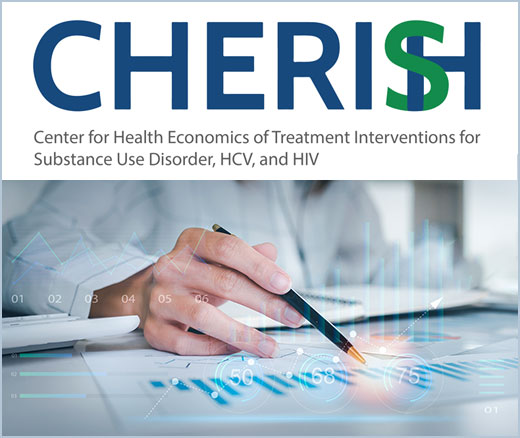
CHERISH Research Center’s Grant Is Renewed
Penn and Four Other Partners Focus on the Health Economics of Substance Use Disorder
Substance Use Disorder
Blog Post

Overdose deaths involving stimulants, such as cocaine, methamphetamine, or ecstasy, have substantially increased in the U.S. since 2011. From January 2021 to June 2024, 59% of total overdose deaths involved a stimulant. Although increases in stimulant overdose deaths largely involve opioids as well, stimulant overdose deaths without any opioid involvement have also risen.
Identifying those at highest risk of overdose can help improve evidence-based interventions and proactive prevention efforts. While such prediction models exist for opioid overdose, none currently address stimulant-involved overdose.
A recent study from LDI Senior Fellows Rebecca Arden Harris, Cheryl Bettigole, Elizabeth Nesoff, Sean Hennessy, and colleagues describes the first internally validated model for stimulant-involved overdose among Medicaid beneficiaries. The team used Medicaid claims data from 2016 to 2020 to predict emergency department treatment or hospitalization for stimulant-involved overdose. They incorporated individual characteristics—such as sociodemographics and baseline diagnoses—and area-level variables like income, education, and inequality indexes, into the model.
Harris discusses the study and its policy implications below.
Harris: Overdoses involving stimulants such as cocaine and methamphetamine have risen sharply across the United States, with Medicaid enrollees disproportionately affected. Yet no validated prediction models tailored to the Medicaid population existed to identify those at highest risk. We sought to address this gap by developing a prediction tool that treats stimulant use disorder as a chronic, relapsing condition requiring proactive care.
Hennessy: The model demonstrated strong accuracy, comparable to many of the leading clinical prediction tools, and can be implemented with routinely available Medicaid data. We are encouraged that it provides a practical means to identify individuals and communities where early intervention could help prevent overdoses.
Harris: Prior substance use diagnoses, combined with area-level indicators such as poverty and crowded housing, are strong predictors of overdose risk. This study breaks new ground as the first internally validated model for stimulant-involved overdose among Medicaid beneficiaries, establishing a transparent, reproducible framework for public health use.
Hennessy: We used a retrospective case-cohort design to efficiently analyze rare overdose events within a large, diverse Medicaid population. The model does not capture overdoses that occur outside of medical settings and was internally but not yet externally validated, so adaptation to other populations may require calibration.
Harris: The model can help public health agencies identify high-risk individuals and communities early and direct limited resources, such as cognitive-behavioral therapy, contingency management, naloxone, and housing support, toward those most in need. It offers a population health tool for proactive rather than reactive approaches to stimulant use disorder.
Hennessy: The research is ongoing, but we’re exploring options like integration into Medicaid and public health surveillance systems. The model could also help identify geographic areas that might benefit from targeted outreach and preventive interventions, similar to how existing prediction tools guide chronic disease management.
The article “Stimulant Overdose Prediction Model for Medicaid-Insured Persons” appeared in JAMA. Authors include: Tuhina Srivastava, Rebecca Arden Harris, Cheryl Bettigole, Hanxi Zhang, Colleen M. Brensinger, Kacie Bogar, Fengge Wang, Elizabeth D. Nesoff, Warren B. Bilker, and Sean Hennessy.


Penn and Four Other Partners Focus on the Health Economics of Substance Use Disorder

Penn Medicine’s New Summer Intern Program Immersed Teens in Street Outreach Techniques

LDI Experts Offer 10 Solutions to Get More Help to Seniors With Addiction

More Flexible Methadone Take-Home Policy Improved Patient Autonomy
Research Brief: LDI Fellow Recommends Ways to Increase Availability

Testimony: Delivered to Philadelphia City Council